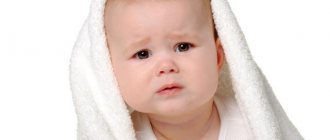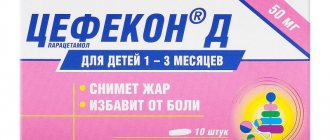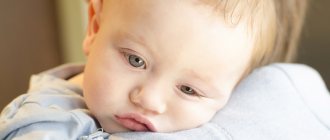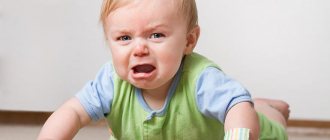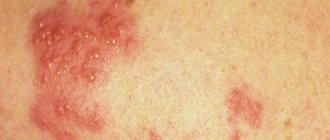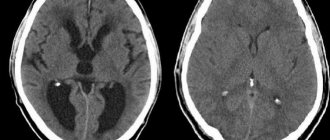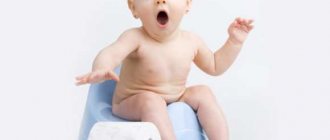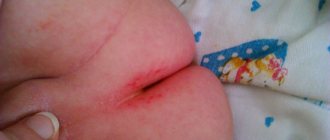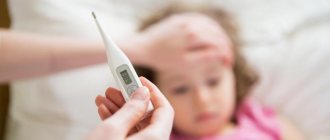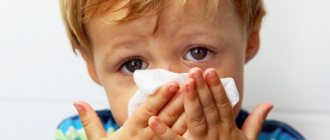You have come for important information and now we will talk about the Causes and first aid for febrile seizures in children. Maybe in your case it was different, but we’ll tell you how it usually happens. Attention, before prescribing diagnoses or medications/treatment for yourself, you should always consult with professional specialists in your field and not self-medicate. Of course, you can quickly find the answer to the simplest questions and diagnose yourself at home. Write your wishes in the comments, together we will improve and supplement the quality of the material provided.
First aid for an attack
Convulsions are life-threatening as they can cause asphyxia and injury to the child. To avoid this, you must adhere to a clear algorithm of actions. What to do during an attack:
- If a child begins to have convulsions, you should immediately call an ambulance.
- Be sure to write down the time the attack began to provide information to doctors. You should remember all the features associated with the symptom. For example, the intensity with which muscle contractions occurred.
- The baby must be placed on its side on a hard surface. You should lightly hold the child by the body, but under no circumstances try to immobilize him. If movement is completely restricted, it can cause a bruise or sprain.
- You should secure the space where the child lies and remove objects that could inadvertently injure him.
- Ventilate the room well. It is also worth making sure that the clothes the child is wearing do not make it difficult for him to breathe.
- Stay with the child until the ambulance arrives. Even if the attack is over, it is possible that these may be recurring convulsions.
- Control your breathing. A child may stop breathing for a few seconds during a seizure. This condition may pass quickly, but if breathing does not return on its own, emergency resuscitation should be performed.
During muscle spasms, you should not put anything in your child’s mouth. The correct position of the child on his side will help to avoid tongue retraction. Any other actions can only injure the oral cavity and teeth. You should not try to give your baby something to drink or give him antipyretic medicine. Such actions are dangerous because they can cause respiratory arrest. With such symptoms, you can reduce the temperature only with the help of suppositories with paracetamol.
Reasons for development
When the temperature rises, the body produces special bodies - pyrogens. They stimulate the production of prostaglandin. Due to these changes, body temperature increases. When the reading on the thermometer exceeds 39°C, the child may experience seizures.
In this case, the body begins to react to what is happening with a fever. If this did not happen, the bacteria would continue to attack the body. The causes of fever include the following factors:
- presence of pathogenic microorganisms;
- diseases of the nervous system;
- the presence of inflammatory processes in organs;
- autoimmune diseases;
- overheating of the body;
- oncological processes.
Convulsions at high temperatures in a child provoke some changes in the body that weaken it. All organs and systems begin to consume more oxygen and work harder.
This load has a negative impact on the child’s body. To avoid unpleasant consequences in the form of complications, it is necessary to begin proper treatment in a timely manner.
Treatment of febrile seizures
Seizure syndrome should be treated only under medical supervision. It is imperative to go to the hospital, because only a doctor can rule out epilepsy and other diseases with similar symptoms. It is recommended to observe the baby in a hospital setting to avoid a recurrent attack for at least a day.
Anticonvulsants are used to treat and relieve muscle spasms. These include medications from the benzodiazepine group. But the basis of therapy is the elimination of hyperthermia. To reduce excessively high body temperature, antipyretics are used. These include medications based on paracetamol, ibuprofen, and in emergency cases - analgin. Glucose drips administered intravenously may also be used. A simple and effective way to reduce fever is wiping with cool water.
If seizures occur against the background of a viral or bacterial infection, appropriate therapy will be prescribed taking into account the type of disease.
An important step is to assess the state of the child’s nervous system. It is necessary to take blood and urine tests. A lumbar puncture is also performed. This study is a sample of cerebrospinal fluid and is one of the accurate diagnostic methods. Babies whose fontanel has not closed will undergo an ultrasound of the brain. Older children undergo a CT scan. After the child is discharged from the hospital, it is necessary to register him at the clinic with a pediatric neurologist. This must be done even if there has only been one seizure episode.
What to do
To relieve spasm, it is necessary to begin complex treatment, which involves taking several groups of medications:
- antipyretics;
- antispasmodic;
- antihistamines.
In this case, it is necessary to take into account some features of treatment.
Important information: How to treat stenosis (narrowing) of the pulmonary valve in newborns
Antipyretics
The most effective antipyretic drugs are Paracetamol and Nurofen. These drugs begin to act within a few minutes after entering the body. You can replace these medications with Aspirin, Ibuprofen or Analgin.
The main thing is to follow the instructions and observe the dosage of the medications.
For children, the amount of the administered drug is calculated based on body weight. In case of overdose, negative consequences may occur, including loss of consciousness.
Antispasmodics
The action of antispasmodics is aimed at eliminating spasm. Here Drotaverine and Papaverine have the greatest effect. These injectable medications are suitable for children under 6 years of age.
For older children, these medications can be replaced with No-shpu. It is also important to follow the dosage.
Antihistamines
In this case, antipyretic drugs must be combined with antihistamines. The latter have a hypnotic effect. The most popular and effective antihistamine is Diphenhydramine. It is often combined with Analgin. This injection is highly effective and helps to quickly reduce body temperature during ARVI and other diseases to normal levels. Any of the above medications can be given only if there are no contraindications.
It is better to do the injection after examination by a doctor. If this has already happened to a child and the parents know for sure that the injection will help, they can do the injection themselves. It is not recommended to carry out self-treatment for children under 1 year of age, because there is a risk of negative consequences. At the first opportunity, it is necessary to show the child to a specialist.
How do febrile seizures manifest in children?
During seizures, frequent involuntary muscle contractions occur. This is due to the fact that babies’ nervous systems have not yet fully developed. High temperature affects the child's brain, which causes the appearance of pathological impulses, resulting in seizures.
Do you trust doctors and their prescriptions?
Yes
20.6%
No
12.06%
I trust, but I check all medications for reviews on the Internet from people who have already tried them and only then do I start taking them.
50.75%
Yes, but only to appointments and doctors from paid clinics.
16.58%
Votes: 199
As soon as a child's temperature rises to a high level, it is necessary to monitor him around the clock. Febrile seizures do not appear immediately in children. Most often, they occur only the next day after the temperature rises to 38 degrees or higher. Muscle contractions can be of varying duration; a cramp lasts from a few seconds to 15 minutes. The following features are noted:
- muscle contraction occurs throughout the body;
- the spasm may begin in the lower extremities;
- the back arches and the child’s head falls back;
- skin becomes pale;
- The nasolabial triangle turns blue.
Febrile seizures are accompanied by loss of consciousness, which can be frightening for unprepared parents. Sometimes breathing stops for a few seconds. Usually after an attack the child begins to feel sleepy. He may be very lethargic for several hours.
Febrile seizures are one-time in nature, but there are also atypical cases when the clinical picture is different. In such a situation, the baby may have spasms at fever for more than 15 minutes. Sometimes muscles contract unevenly. For example, only the upper or only the lower limbs will shake. With atypical seizures, the syndrome can be repeated several times.
Consequences
Febrile seizures frighten parents because they look really scary. But convulsions against a background of high temperature are not as dangerous as people who are far from medicine sometimes imagine. A convulsive syndrome of a simple type does not injure the brain, does not affect it and does not cause epilepsy in most cases, as was thought not so long ago. The risk of developing a convulsive syndrome of the epileptic type after experiencing febrile seizures is estimated by experts at 0.5 - 1.5%.
Causes of seizures in babies
Children under 6 years of age are at risk of developing febrile seizures. Most often they occur in children aged six months to 1.5 years due to an immature nervous system. Involuntary muscle contractions may be a reaction to an increase in body temperature.
Children with the following conditions are predisposed to seizures:
- temperature from 38 degrees and above;
- disruption of the central nervous system;
- underweight;
- hereditary predisposition.
Convulsive syndrome also develops in various diseases. Muscle contraction occurs during a viral or bacterial infection, against the background of dehydration. The eruption of baby teeth can also lead to febrile seizures in children. Children who have diseases of the endocrine system may encounter the disease. In rare cases, the cause of seizures is preventive immunization. Reactions can occur to vaccines that cause fever. These include DPT and MMR vaccinations.
During muscle spasms, you should not put anything in your child’s mouth. The correct position of the child on his side will help to avoid tongue retraction. Any other actions can only injure the oral cavity and teeth. You should not try to give your baby something to drink or give him antipyretic medicine. Such actions are dangerous because they can cause respiratory arrest. With such symptoms, you can reduce the temperature only with the help of suppositories with paracetamol.
Uninformed parents may be frightened by a specific disorder that sometimes occurs in young children. These are convulsions due to the child’s fever. This problem most often occurs in children aged six months to five years. How to help your child if such a phenomenon occurs? In such cases, parents need to pull themselves together, not panic and know exactly what to do to alleviate the child’s condition. After all, it is on the adults who care for the little patient that his health, and sometimes even his life, largely depends.
The concept of febrile seizures
Febrile seizures are convulsions that can occur in infants and young children and are the body's reaction to an increase in temperature. Spasms are observed in children from 6 months to 6 years, and their peak occurs in the second year of life.
Convulsions during fever in a child occur in healthy children, without previous brain damage, with normal psychomotor development. They affect 2-5% of all children.
The exact mechanism that triggers convulsions is not known, but genetic predisposition plays a role in the occurrence of an attack. That is, a dangerous sign is the presence of at least one episode of febrile seizures in other family members in childhood.
They can usually appear at temperatures above 38°C in the first 24 hours after they begin to rise.
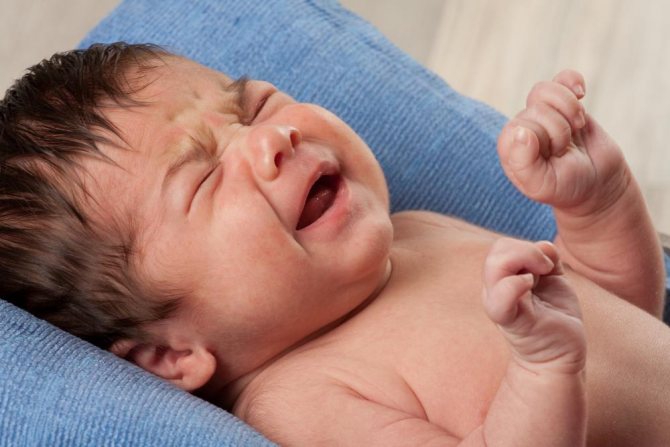
Seizures in a baby
Important! The probability of a recurrence of an attack in children who have had it once is 30-40%.
Emergency medical care for seizures in newborns
In case of seizures in newborns, you should urgently call a doctor. The doctor admits the child to the intensive care unit. First aid by a doctor consists of measures.
- A glucose solution (25 percent) is administered intravenously at the rate of 4 ml per kilogram of weight.
- Pyridoxine, or vitamin B6, is administered intravenously.
- A solution of calcium gluconate is administered (in a volume of up to 10 ml).
- Phenobarbital is injected slowly intravenously.
- Phenytoin – intravenously (per kilogram of weight – 20 mg).
You cannot give injections yourself!
Seizures in newborns
Separately, it is worth mentioning the phenomenon of convulsions in newborns. They do not necessarily occur as a reaction to a fever:
- Spasms due to birth trauma may indicate hypoxic damage to brain tissue. Such convulsions develop in the first eight hours of a newborn’s life.
- Hypoglycemic spasms. They can occur against the background of low glucose levels in the baby's blood. As a rule, this phenomenon can be observed in the first 48 hours after the birth of the baby.
- Withdrawal syndrome. Mothers who took alcohol or drugs during pregnancy give birth to children who are accustomed to regular doses of the drug. After birth, the baby stops receiving the toxin, which can cause withdrawal symptoms.
There are other causes of seizures in newborns. However, they are most often the result of serious diseases that are diagnosed during pregnancy or at the time of birth of the baby.
Prohibited actions for febrile seizures
During a convulsive symptom, there should be no foreign objects in the child’s mouth. Parents should not give their baby medications, insert a spoon trying to reach the tongue, etc. It is worth keeping in mind that any manipulation of the oral cavity can cause serious injury. This will negatively affect the condition of the child’s teeth, tongue and jaws. There is also a high probability that some of the objects placed in the mouth of a small patient will end up in his respiratory tract. And this is a direct threat to the child’s life.
If there is no risk of injury, the patient's movements should not be interfered with in any way. Restraining the child's body does not reduce or stop the intensity of the attack itself. In addition, such actions do not provide any help to the baby.
Parents should also not give the patient anything to drink until his consciousness is fully restored. This poses a risk of medication or liquid entering the respiratory tract.
If your child has cramps in his legs at night
A child's legs cramp during sleep when:
- lack of minerals (magnesium, calcium, iron);
- low blood sugar;
- keeping your feet in an uncomfortable position for a long time (wrong shoes);
- flat feet.
Choose the right shoes for children to avoid problems later.
If a child has leg cramps at night, then you need to help him cope with the attack:
- Help the baby stand up.
- Hold it so that your legs are straight.
- Ask to pull your socks towards you. It hurts, but stretching the muscle will help stop the cramp.
- If your child refuses to pull on his socks because of pain, massage his foot to improve blood circulation.
- Ask him to breathe deeply to ensure sufficient oxygen supply to the contracting muscles.
Massaging your feet will help relieve pain.
There is no need to call an ambulance. But if seizures bother your child regularly, consult a doctor to determine their cause. Most likely, he will prescribe vitamin and mineral complexes and recommend purchasing orthopedic shoes. Donating blood for sugar and checking your feet for flat feet would be a good idea.
As a rule, the presence of convulsive seizures in a person suggests a disease such as epilepsy. This is a very serious pathology that requires constant monitoring and treatment. However, this disease is far from the only cause of seizures. They may arise due to:
Seizures due to brain malformations
They are quite rare (about 10% of all cases of neonatal seizures), and occur in the first days after birth. Also considered a rare option is the familial nature of the syndrome with convulsions up to 20 times a day, which begin to appear in the second week of life.
Hypoglycemic seizures
Such convulsions appear in the first two days against the background of very low blood sugar levels (less than 1.1 mmol per liter). Initial manifestations are characterized by hyperactivity, sweating, anxiety, and breathing problems. The stronger the hypoglycemia, the more severe the generalized tonic seizures. Such conditions are caused by metabolic disorders of the infant, galactosemia, hormonal disorders, birth asphyxia, prematurity, and low birth weight.
Causes of seizures in infants and newborns
In the first month of his life, a child in some cases has a very unstable system that can respond with convulsions to various disadvantages.
Convulsions due to birth trauma
They arise as a result of hypoxic damage to brain tissue, hemorrhage or shock waves of cerebrospinal fluid. Develops in the first eight hours of a baby's life. Hemorrhages in the cerebral ventricles are characterized by tonic convulsions, while hemorrhages in the subarachnoid space are characterized by clonic convulsions. For cerebral hematomas or hemorrhages under the dura mater, generalized tonic or clonic convulsions develop.
Hypoglycemic seizures
Such convulsions appear in the first two days against the background of very low blood sugar levels (less than 1.1 mmol per liter). Initial manifestations are characterized by hyperactivity, sweating, anxiety, and breathing problems. The stronger the hypoglycemia, the more severe the generalized tonic seizures. Such conditions are caused by metabolic disorders of the infant, galactosemia, hormonal disorders, birth asphyxia, prematurity, and low birth weight.
Anoxic seizure syndrome
This syndrome is a consequence of deep oxygen starvation of the brain in children with asphyxia, which leads to cerebral edema. Tonic-clonic seizures usually develop. The first phase is tonic, followed by stopping of the eyeballs and holding the breath. The attack lasts several minutes and is replaced by lethargy and tearfulness of the child. Cramps appear immediately on the day of birth. If a similar condition develops in children older than a month, you should suspect an infectious process and be wary of the development of epilepsy.
Fifth day cramps
They occur between the third and seventh day of a baby’s life and manifest themselves as short-term (up to three minutes) clonic twitches, the frequency of which reaches forty times per day. These disorders are associated with low levels of zinc in the blood of newborns.
Convulsions due to hemolytic disease of the newborn
Such convulsions are caused by the toxic effect of bilirubin on the central nervous system. These generalized tonic seizures develop during the first week of the child and are accompanied by jaundice, depressed reflexes, drowsiness, and impaired sucking. With the development of kernicterus, the subcortical structures of the brain are affected. Obsessive involuntary movements and delayed motor and mental development of the baby appear.
Spasmophilia (tetanic convulsions)
This is the result of a calcium metabolism disorder. The early version appears on the third day from birth, the late version - after the fifth day. Characterized by a spasm of upward gaze, tonic spasms of the arms and legs (curling and cramping of the fingers). Following this, a tonic phase may develop with loss of consciousness.
Pyridoxine dependent
This is a consequence of a violation of vitamin B6 metabolism. They are typical for the first three days of a baby’s life. Manifest in the form of widespread muscle twitching, head nodding, and shuddering.
Seizures due to brain malformations
They are quite rare (about 10% of all cases of neonatal seizures), and occur in the first days after birth. Also considered a rare option is the familial nature of the syndrome with convulsions up to 20 times a day, which begin to appear in the second week of life.
Withdrawal syndromes
These are seizures in children born to mothers suffering from alcoholism or drug addiction who used drugs during pregnancy. Similar conditions can occur in infants whose mothers used barbiturates.
First aid for seizures in a child
- Call an ambulance
- Lay the baby on a hard, flat surface on his side so that the head and chest are in line, and raise the head end with a rolled up blanket. In this case, the cervical spine should not be displaced and it is important to lay the child down so that he does not fall out of nowhere.
- Remove all objects around the child that could injure him.
- Free your neck and chest from tight clothing to allow breathing freely.
- Ventilate the room; the air temperature should not be higher than 20 C.
- Do not forcefully restrain the child from involuntary movements, do not unclench his jaws, do not pour liquids into his mouth, do not insert a spoon, finger, etc.!
Emergency care for neonatal seizures
- Intravenous administration of 25% glucose solution (4 ml per kg of weight).
- Vitamin B6 (pyridoxine) 50 mg intravenously.
- 10% calcium gluconate solution up to 10 ml (2 ml per kg of weight).
- 50% magnesium solution 0.2 ml per kg.
- Phenobarbital (10-30 mg per kg body weight) administered slowly intravenously.
- Phenytoin 20 mg per kg intravenously.
This is a consequence of a violation of vitamin B6 metabolism. They are typical for the first three days of a baby’s life. Manifest in the form of widespread muscle twitching, head nodding, and shuddering.
First aid if a child has convulsions at a high temperature
Often the first convulsions occur during sleep, so the child wakes up anxious, and it is difficult for parents to understand the cause of the anxiety. Doctors recommend trying to remain calm and immediately calling a team of specialists, explaining the situation.
First aid is provided to the baby according to a certain algorithm:
- During an attack, it is not recommended to grab the child in your arms, hold him close, sit him on his feet, try to forcefully bend his arm, or straighten his fingers.
- It is better to leave the baby on the bed or a hard surface, with a folded towel under his head.
- Unbutton or take off your pajamas, T-shirt, and open the window to provide fresh and cool air.
- Remove any objects around the child that can injure or scratch: toys, dishes, books.
- Turn the baby on its side so that saliva or vomit does not enter the larynx. Otherwise, the risk of reflux of stomach contents into the respiratory tract increases significantly.
First aid when a complication occurs is not to try to stop the attack. It is aimed at ensuring safety so that an unconscious child does not injure himself or suffocate on saliva. Important points that adults should remember, despite the excitement and presence of panic:
- Be sure to monitor your breathing rate and chest movements. In case of stopping, resuscitation measures are immediately carried out, chest compressions are performed.
- It is necessary to record on the watch how many minutes the convulsions last.
- Carefully monitor the child’s condition during an attack: monitor reactions to stimuli, voices, light, which parts of the body are involved in paresis, whether the spasm causes pain.
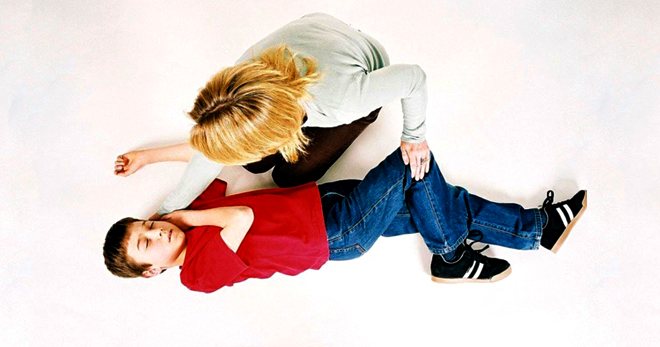
All collected information must subsequently be discussed with a pediatrician or neurologist. Febrile seizures themselves do not pose a serious danger for 99% of children, but they may mean that there is a risk of developing epilepsy and problems with brain functionality. Sometimes this helps to make a timely diagnosis and begin preventive treatment.
Another useful video about cramps from Komarovsky:
When there are cramps at night, parents become confused, making many wrong movements. During an attack, the following manipulations are not recommended:
- Trying to shake or wake up the child.
- Forcibly unclench your teeth using a spoon or other object.
- Pour water into the mouth of an unconscious child, a medicine for fever.
- Turn on the bright light
The doctor will give further recommendations on what to do to prevent a new attack. In most cases, the child is taken to the hospital for observation, and medications are selected to reduce the temperature. A neurologist may prescribe a sedative to reduce irritability. Treatment consists of simultaneous use of medications based on ibuprofen (paracetamol) and Diazepam.
First aid for seizures in children
What to do if your child has a seizure? Call an ambulance. But since the child struggles with the spasm for 2 seconds to 10 minutes, doctors may not have time to arrive. Parents need to provide some help to the baby using the following algorithm:
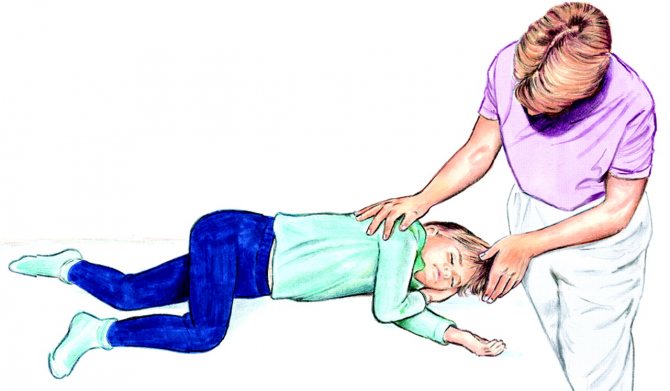
- Remove tight shoes and clothing, and open the window for fresh air.
- Place the baby on its side on a flat, not soft surface. Or at least turn your head to the side.
- While the convulsions last, clear your mouth of mucus by placing a roll of cloth between your teeth. This will help prevent biting or sticking of the tongue. Hard objects should not be used to avoid damaging the teeth.
- If the baby faints, try to bring him to his senses and hold out until the doctors arrive. Fainting syndrome can be relieved by applying cotton wool with ammonia, affectionate conversations, and touching.
Symptoms and diagnosis

The symptoms of seizures depend on the nature of muscle contraction. But in general we can talk about the following general features:
- Various tics and twitches;
- Uncontrolled movements of arms or legs;
- Distortion of facial features;
- Rolling eyes;
- Lockjaw;
- Pale skin and bluish tint to lips;
- Excessive salivation;
- Freezing in an unnatural position;
- Nausea and even vomiting.
The child may wet himself or faint. After an attack, he will most likely become capricious, but at the same time he will be sleepy and lethargic.
How to recognize epileptic seizures? During them, the baby falls to the floor and begins to convulse. His eyes roll back, foam appears on his lips, his jaw clenches. The child loses consciousness. The patient is able to wet himself or have involuntary bowel movements. Coming out of an attack is accompanied by disorientation and loss of memory of what happened. At the end of epileptic convulsions, the child experiences muscle relaxation and falls asleep.
Only a doctor can determine exactly why the seizures started. He decides which therapeutic course to choose.
But before this, the doctor collects anamnesis, analyzes how the seizure began, and prescribes tests. They usually include a blood test and electroencephalography. Sometimes computed tomography, pneumoencephalography, angiography, and spinal puncture are required.
Convulsions are dangerous because their consequences are unpredictable. During an attack, a child’s brain functions are weakened, and virtually no oxygen is supplied. Because of this, necrosis of brain cells begins, which leads to problems with the neuropsychic system and developmental delays.
General convulsive syndromes are the most serious, since the baby has absolutely no control over the body and is unconscious. During an uncontrolled seizure, epileptics run the risk of suffocating on saliva and vomit and biting off their tongue.
Why are night attacks dangerous? The baby finds himself alone with the disease, without the help of adults. This condition can even lead to death.
Symptoms: general and individual
The onset of seizures may manifest differently in each child, but there are some things that are common to all. As a rule, febrile seizures have standard features:
- during spasms, the baby does not respond to external stimuli;
- convulsions can provoke a change in the color of the skin - pallor or even slight blue discoloration is possible;
- Most often, muscle spasms last 5–15 minutes.
However, in reality, cramps may look different in each case. They often have a different character:
- Tonic - the child stands tall, throws back his head, and his whole body twitches. These types of seizures are more common. As a rule, in this case, the child stretches his legs, presses his arms to his chest, and throws his head back. The twitching is fading in nature and gradually fades away.
- Atonic - in this case, all muscles relax, even the sphincter. In addition, the baby may wet itself. This type of seizure is much less common.
- Local – the muscles of the limbs tense and twitch, or only one part of the body.
During tonic convulsions, the child sits up straight and tenses all the muscles
Febrile seizures in children
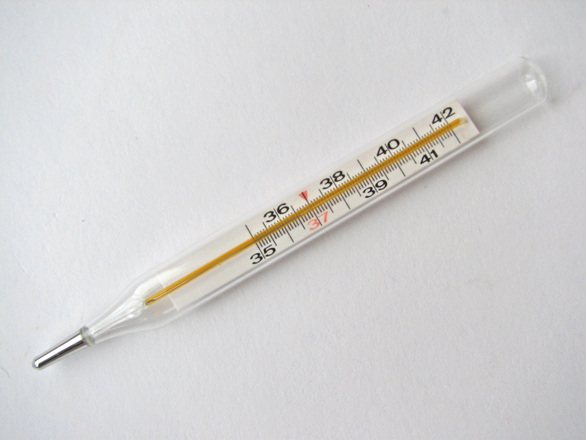
This is what they call seizures when a child has a fever. Preschool children are prone to such manifestations. Febrile convulsions in children with fever develop due to the fact that the baby’s brain is not sufficiently formed and is sensitive to various irritants. They are observed in a child at a high temperature: 38-39 degrees and above. Moreover, attacks are possible, even if they have not manifested themselves before.
What do cramps look like with fever? This variety manifests itself as follows:
- Detachment to the point of loss of orientation;
- Turning pale and holding your breath;
- Muscle twitching and freezing.
Convulsions in a child with fever are not considered normal, but in isolated cases they are not dangerous. The causes of febrile seizures are various infections of a bacterial and viral nature. Children may be genetically predisposed to such a reaction.
It is important to note: the faster hyperthermia develops, the higher the likelihood of convulsive conditions. However, there are also low-grade seizures. Such convulsions occur after a child has a high temperature, when the thermometer drops to 37 degrees. Usually they are repeated, with complications of the disease. However, such convulsions may occur during vaccination.
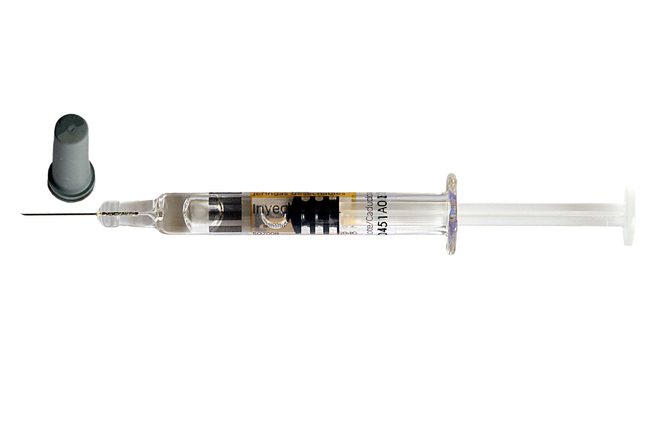
Temperature seizures often occur in a child with a disease caused by the Epstein-Barr virus. This disease is called infectious mononucleosis. It is often confused with a sore throat, but the Epstein-Barr virus is a herpetic virus. The majority of the world's population is carriers of Epstein-Barr infectious agents. But in preschool children, due to an underdeveloped defense system, the Epstein-Barr virus becomes more active and provokes a full-blown disease. Fortunately, after illness, immunity is developed. Even those who suffered from mild illness are no longer afraid of the Epstein-Barr virus. And the painful condition that is provoked by the Epstein-Barr virus can be easily relieved with modern medications.
Additionally, massage, reflexology, therapeutic exercises, and other physiotherapy are prescribed. In case of serious problems with brain function, surgical intervention is possible.
Classification by area of distribution
Depending on the area of distribution, they speak of partial and generalized seizures. Partial (local) occur when the electrical activity of a certain area of the cerebral cortex increases. They manifest themselves as twitching of individual muscles of the foot, arms, tongue, including during sleep.
Generalized convulsions take over the entire body. A characteristic sign is the tension of the torso. In this case, the head is thrown back, the legs are straightened, the arms are bent to the chest, the teeth are clenched, the pupils do not react to light, the skin turns pale and blue. In most cases, loss of consciousness occurs. This is typical for epileptic seizures, hysteria, tetanus, acute intoxication or infection, and cerebral circulatory disorders.
Before an attack, hallucinations may appear; convulsions are immediately preceded by an inarticulate cry. With epilepsy, several seizures occur in a row. One attack lasts up to 20 seconds.
Causes of febrile seizures and their manifestations
Baby fever convulsions, also known as febrile seizures, are body spasms or shaking that occur primarily in children and are caused by fever (“febrile” from the Latin febris, meaning fever).
The attack itself is almost always harmless. It does not cause brain damage or epilepsy.
As with most types of seizures, the onset is very dramatic, with little or no warning. As a rule, a seizure attack lasts only a few minutes and stops on its own.
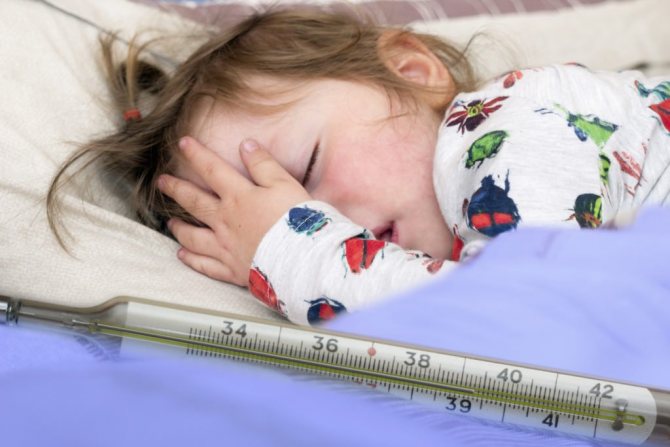
Febrile seizures occur because a child's developing brain is sensitive to the effects of fever. These attacks will develop at high temperatures (above 39˚Ϲ), but a seizure can occur at lower numbers. A sudden increase in temperature is more important than the fever itself. Seizures may occur with an initial rise in fever before parents even realize the child is sick.
The exact cause of febrile seizures remains unknown. We know that the immature developing brain is different from the adult brain. It is known that there is a certain age-related susceptibility. The substance responsible for causing fever in humans is also found in certain nerve cells in the brain, which lowers the seizure threshold (an indicator of readiness for seizures) and causes seizures, but this occurs only in the developing child's brain.
Mechanism of occurrence and causes
Cramps are involuntary muscle contractions that occur under the influence of too much excitation of neurons in the motor part of the brain. They mainly appear in children under 3 years of age. With age, their frequency decreases. Convulsive activity remains in only 2-3% of children diagnosed with epilepsy or organic damage to the central nervous system.
A favorable condition for the occurrence of spasms is the unformed central nervous system of babies. Unpreparedness for full functioning after birth is common to all babies. However, hypoxia during intrauterine development, intoxication and infectious diseases of the expectant mother lead to the fact that the immaturity of the brain structure and its functions in the newborn will be more noticeable. Asphyxia, damage to the central nervous system, and hemorrhages that occur during childbirth also have a negative impact on the baby’s readiness for independent life. Most problems are corrected in the first year of life under the influence of drug therapy and physiotherapy.
The main causes of involuntary muscle spasms are:
- Traumatic brain injuries.
- Various types of intoxication.
- Vaccination.
- Epilepsy. The disease is mainly hereditary. It is believed that it is passed on through generations to children of the same sex.
- Inflammatory infectious diseases of the brain, for example, meningitis, encephalitis.
- Neoplasms.
- Congenital and acquired pathologies of the cardiovascular and endocrine systems.
- Heat. The threshold for responding to hyperthermia is different in different children and depends, among other things, on the formation of the central nervous system.
- Imbalance of vitamins and minerals.
Causes of seizures
First, it’s worth understanding why seizures occur in a child when he has a fever. It turns out that this phenomenon is not uncommon, it occurs in every twentieth child under the age of 5-6 years. As a rule, seizures, which are called febrile, occur due to an increase in temperature from 38.5˚C and above. Very rarely, such spasms accompany a temperature of up to 38˚C. Sometimes even a common cold, as well as a sore throat, flu, reaction to a vaccination, or an increase in temperature during teething can trigger convulsions (see also: temperature during teething in children).
Experts to this day have not been able to give an exact answer to the question of what is the cause of spasms. One of the supposed factors is imperfection of the nervous system, another is genetic predisposition. According to some studies, seizures are more likely to occur in children whose parents showed similar symptoms in infancy. Also at risk are children whose relatives suffer from epileptic seizures.
Decreased calcium levels in the blood can also lead to cramping. In this case, accompanying phenomena are possible - apnea, bloating. A good doctor, after conducting a series of tests, will be able to immediately suspect a lack of calcium in the blood of a small patient. To confirm the diagnosis, you will need to do a blood test.
Diagnostics
According to statistics, single febrile seizures occur in 5% of all young children and do not pose a health hazard. In this case, parents need to closely monitor the child’s well-being and prevent further rapid increases in body temperature. No special examination or treatment is required in this situation.
You should consult a doctor in the following situations:
- repeated attack in a child under 6 years of age;
- atypical form of paroxysms;
- the appearance of seizures at normal body temperature;
- development of any neurological symptoms after an attack.
To exclude organic pathology of the nervous system, an EEG (electroencephalography) is performed. The examination must be carried out no later than a month after the onset of the attack. Specific changes in the EEG are detected mainly in children with atypical paroxysms. After the examination, a neurologist is consulted.
Febrile seizures in children - first aid
Urgent emergency first aid for febrile seizures is necessary for a child, and parents will most likely have to provide it.
Febrile seizures in children - emergency care:
- Call a doctor.
Since convulsive syndrome may indicate the most serious diseases, an urgent examination by a doctor is necessary. - Ensuring a comfortable and safe position.
The child must be placed on a flat surface, ensure free breathing (remove tight clothing) and air flow. If the child feels nauseous, the child should be turned so that the mass flows freely. If an antipyretic was not used before the attack, administer it in the form of a suppository. - Monitoring the child's condition.
Before the doctor arrives, you should monitor the condition of the sick baby. If breathing stops, begin resuscitation measures (artificial respiration).
Parents can provide first aid correctly only by maintaining a sober mind and adequate behavior - when a child has an attack, parents should not panic and take erroneous actions.
Absolutely forbidden:
- Trying to hold back the convulsions with force can only help support the child so that he does not hurt himself.
- Trying to inject medicine through the mouth is useless and dangerous during a convulsion.
- Insert objects into the mouth to prevent tongue swallowing.
- Perform artificial respiration if he breathes on his own, but weakly.
- Perform artificial respiration during an attack - the airways are compressed at this time.
First necessary aid
How should parents behave if their child has a seizure due to high fever? What to do if you have seizures, and what should not be done under any circumstances?
First you should calm down and call a doctor, because panic cannot help the baby in any way. The most important thing is to ensure the child’s safety, that is, prevent him from hitting himself and remove objects that could injure him. The child must be freed from excess clothing that restricts movement and placed on his side. You need to constantly be near the baby, carefully monitoring his condition.
If your child begins to turn blue and his breathing becomes erratic, you can splash cold water on his face. It is imperative to remember that during an attack you should not put or pour anything into the mouth, as the child may suffocate. For the same reason, in order to bring down the temperature during an attack, the child should not be given syrups or tablets orally; only the use of suppositories is allowed.
It is very important to note the duration of the seizure, and also remember exactly how the seizures manifested themselves. This information will help the doctor in the future.

